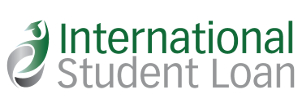Though the recently released Open Doors report has a great deal to say about U.S.-bound international student enrollment, it is important to emphasize emphasize that U.S. was not solely a recipient of such exchanges. In fact, in 2012-2013 had more students than ever – fully 283,332 – U.S. students studied abroad. This represents a 3.4% increase over the year before and a three-fold increase on the approximately 71,000 that studied abroad twenty years ago. This is not only an encouraging sign for international cultural exchange but also indication of recovery for a sector that had been dramatically affected by the Great Recession.
This growth indicates not only increasing confidence in the U.S. economic recovery in general but also significant changes in the perception of specific countries in particular. For example, though the number of students studying in Japan had fallen dramatically following the tsunami-triggered nuclear disaster at Fukushima, last year that number rose by more than 27.8%.
Moreover, a closer look at the data indicates that U.S. student involvement in study abroad programs increased in both familiar and relatively novel destinations. Indeed, the United Kingdom (up 4.5%) and other European destinations comprised the list of the most popular destinations for Americans abroad while several up-and-coming destinations also saw growth. China, for example, finished fifth (up 2%) while other off-the-beaten path destinations in Latin America such as Costa Rica (up 9.3%) and Brazil (up 16.5%) saw considerable increases (on admittedly smaller bases).
Still a Rarity
All that having been said, even though the kind of international experience that studying abroad can promote is highly valued by employers, only a small minority – 9.4% – of undergraduates students in U.S. study abroad. Nor are all colleges and universities contributing to this figure equally. Despite the fact that other schools and states are larger, New York University and New York State itself sent the most students abroad last year. All this would seem to indicate that, though study abroad advisors are making progress in their efforts, there is still much to be done to bring U.S. study abroad participating in line with other developed economies.




